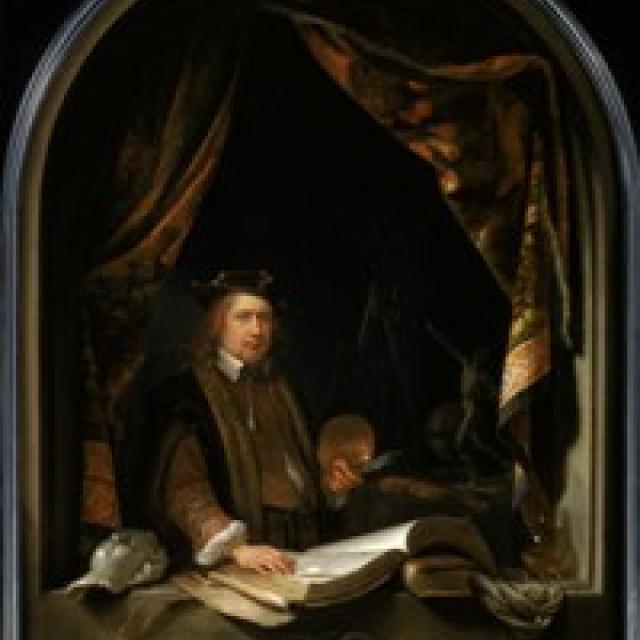
Gerrit Dou
Bibliography
1641
Orlers, Jan Jansz. Beschrijvinge der Stadt Leyden. 2nd. ed. Leiden, 1641: 377, 380.
1706
Piles, Roger de. The Art of Painting and the Lives of the Painters. London, 1706. (Translated from Abrégé de la vie des peintres.... Paris, 1699. 2nd ed., Paris, 1715.)
1753
Houbraken, Arnold. De Groote Schouburgh der Nederlantsche Konstschilders en Schilderessen. 3 vols. in 1. The Hague, 1753 (Reprint: Amsterdam, 1976): 2:1-3.
1829
Smith, John. A Catalogue Raisonné of the Works of the Most Eminent Dutch, Flemish and French Painters. 9 vols. London, 1829-1842: 1(1829):1-47.
1902
Martin, Willem. Gerard Dou. Translated by Clara Bell. London, 1902.
1907
Hofstede de Groot, Cornelis. A Catalogue Raisonné of the Works of the Most Eminent Dutch Painters of the Seventeenth Century. 8 vols. Translated by Edward G. Hawke. London, 1907-1927: 1(1907):337-470.
1911
Martin, Willem. Gérard Dou, sa vie et son oeuvre: Etude sur la peinture hollandaise et les marchands au dix-septième siècle. Paris, 1911.
1913
Martin, Willem. Gerard Dou: des Meisters Gemälde in 247 Abbildungen. Klassiker der Kunst in Gesamtausgaben, 24. Stuttgart and Berlin, 1913.
1980
Artemis Group. Ten Paintings by Gerard Dou, 1613-1675. Exh. cat. David Carrit Limited, London, 1980.
1983
Sumowski, Werner. Gemälde der Rembrandt-Schüler. 6 vols. Landau, 1983: 1:498-607; 5:3088-3089; 6:3701-3703.
1984
Sutton, Peter C. Masters of Seventeenth-Century Dutch Genre Painting. Edited by Jane Iandola Watkins. Exh. cat. Philadelphia Museum of Art; Gemäldegalerie, Staatliche Museen Preussischer Kulturbesitz, Berlin; Royal Academy of Arts, London. Philadelphia, 1984: 181-188.
1988
Sluijter, Eric J., Marlies Enklaar, and Paul Nieuwenhuizen. Leidse Fijnschilders: van Gerrit Dou tot Frans van Mieris de Jonge 1630-1760. Exh. cat. Stedelijk Museum De Lakenhal, Leiden. Zwolle, 1988: 96-115.
1989
Hecht, Pieter. De Hollandse fijn schilders: Van Gerard Dou tot Adriaen van der Werff. Exh. cat. Rijksmuseum, Amsterdam. Amsterdam, Maarssen, and The Hague, 1989: 23-64.
1991
MacLaren, Neil. The Dutch School, 1600-1900. Revised and expanded by Christopher Brown. 2 vols. National Gallery Catalogues. London, 1991: 1:105.
1995
Wheelock, Arthur K., Jr. Dutch Paintings of the Seventeenth Century. The Collections of the National Gallery of Art Systematic Catalogue. Washington, D.C., 1995: 56-57.
2000
Baer, Ronni, et al. Gerrit Dou, 1613-1675: Master Painter in the Age of Rembrandt. Edited by Arthur K. Wheelock, Jr. Exh. cat. National Gallery of Art, Washington, D.C.; Dulwich Picture Gallery; Royal Cabinet of Paintings Mauritshuis, The Hague. New Haven, 2000.












